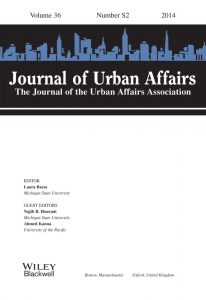Transforming Despair into Hope
by Marcus Redley ·

It is a feature of qualitative research that behind every published paper is a pile of data, fieldnotes, and ideas that never make it into the finished text. Nevertheless, many of these ideas and observations, culled along the way, will have played an important role in shaping the final analysis. It is some of these thoughts and observations, not formally presented in this paper and its companion piece – Towards a new perspective on deliberate self-harm in an area of multiple deprivation (Redley, 2003) – that I want to share.
There is a story, possibly apocryphal, of a philosopher who asked his students to imagine what they would say to keep a young person from jumping to their death from the parapet of a bridge. In this scenario lies the ultimate question, how should one live one’s life? It takes one kind of knowledge to offer a convincing explanation of why someone might attempt to take their own life; it is an entirely different kind of knowledge that is required to lead a person out of that suicidal place. Untimely, only knowledge of the latter kind is of value.
Whilst collecting data one morning and sitting with the clinical team prior to the commencement of the ward round, we were told that one of the beds was occupied by a student. This patient had, apparently, taken an overdose in response to anxieties arising from the possibility that she might fail her degree. When I suggested to the clinicians in the rooms that failing your degree was not a such a big deal, my remarks were greeted with looks of amazement and sharp intakes of breath. Proof, if needed, of Durkheim’s hypothesised external and constraining moral norms and our emotional and cognitive attachment to them (Durkheim 1982). The value we place on a university education, is more valuable, seemly, than one’s health and life.
The people I interviewed about their overdoses, I sensed, were index linked to perturbations in their environment. Simply put, and as I explained it to those who asked, it was a case of find a five-pound note and you are happy, loose a five-pound note, and you are miserable. Two of the women I met, I am sure, were what you might call “rocks” in their local community: the go-to person if you wanted to talk about your troubles. Yet, these women had themselves taken a number of overdoses. Whatever support they could offer to others; they could not provide it for themselves. In my imagination I could see three or more residents of the estates where the research was conducted gathered together and in the course of their conversations sharing, confirming and reinforcing stories in which their lives were shite (in the local vernacular). In such a milieu it would be only a matter of time before a person in despair, and disinhibited through the consumption alcohol, might take an overdose.
A drugs and alcohol worker I met who was born and brought up in the locality spoke of a “mysterious black cloud” that hung over the area. While it would have been easy to attribute this cloud to grim municipal architecture and high levels of unemployment, I came to believe it was a cloud of hopelessness. Cut off from opportunities and belief in the possibility of making something of themselves through education and employment, the residents lacked the ability to build plausible narratives of hope when confronting their many and various difficulties. Consequently, when admitted to the Edinburgh’s Royal Infirmary following an overdose, these people were culturally alien to the clinicians – busily making something of themselves – who assessed them. Moreover, seeing value and potential in the life of a person mired in the sufferings of addiction; ill-health; educational under achievement; unemployment; abuse; and hopelessness, is demanding. Creating and contributing to a culture where such people can live hope filled lives is even more so. Yet, this is the task we are increasingly called up to face if we are to transform a culture that marked by material inequality and sustained through feelings of superiority and inferiority (Wilkinson and Pickett 2019).
The saddest thing I read when reviewing the literature for this research concerned the few people who had jumped off the Golden Gate Bridge and survived. As they fell, they all reported regretting the decision to jump (see Wikipedia Suicides and the Golden Gate Bridge).
References
Durkheim, E (1982): The Rules of Sociological Method and Selected Texts on Sociology and its Method. Edited by Steven Lukes. Free Press New York.
Redley, M. (2003). Towards a new perspective on deliberate self‐harm in an area of multiple deprivation. Sociology of health & illness, 25(4), 348-372.
Wilkinson, R., & Pickett, K. (2019). The inner level: How more equal societies reduce stress, restore sanity and improve everyone’s well-being. Penguin Press
Author Information
Marcus Redley, who is currently based at the University of East Anglia, is part of the UK’s academic underclass comprising people on temporary, part-time, and hourly paid contracts. In addition to researching suicide, he has undertaken studies of the difficulties faced by people with intellectual disabilities; decision-making in couple households; management in business and academia; and healthcare.
World Suicide Prevention Day (WSPD) 2019 is 10th September 2019. For more information see https://www.iasp.info/wspd2019/ .
For support on issues raised in this article, Samaritans can be contacted for free by phone on 116 123, or by email at jo@samaritans.org. More information is available at: https://www.samaritans.org/how-we-can-help/contact-samaritan/





1540-6210/asset/society_affiliation_image.gif?v=1&s=812a48e1b22880cc84f94f210b57b44da3ec16f9)
1467-7660/asset/DECH_right.gif?v=1&s=a8dee74c7ae152de95ab4f33ecaa1a00526b2bd2)